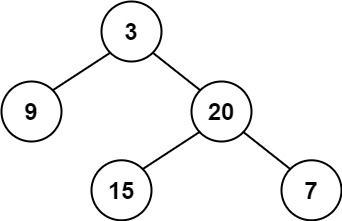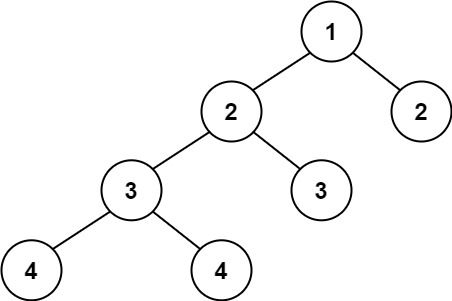Given a binary tree, determine if it is height-balanced.
For this problem, a height-balanced binary tree is defined as:
a binary tree in which the left and right subtrees of every node differ in height by no more than 1.
Example 1:
Input: root = [3,9,20,null,null,15,7] Output: true
Example 2:
Input: root = [1,2,2,3,3,null,null,4,4] Output: false
Example 3:
Input: root = [] Output: true
Constraints:
- The number of nodes in the tree is in the range
[0, 5000]. -104 <= Node.val <= 104
# Definition for a binary tree node.
# class TreeNode:
# def __init__(self, val=0, left=None, right=None):
# self.val = val
# self.left = left
# self.right = right
class Solution:
def isBalanced(self, root: TreeNode) -> bool:
def height(root):
if not root:
return 0
return 1 + max(height(root.left), height(root.right))
if not root:
return True
left_height, right_height = height(root.left), height(root.right)
return abs(left_height - right_height) <= 1 and self.isBalanced(root.left) and self.isBalanced(root.right)/**
* Definition for a binary tree node.
* public class TreeNode {
* int val;
* TreeNode left;
* TreeNode right;
* TreeNode() {}
* TreeNode(int val) { this.val = val; }
* TreeNode(int val, TreeNode left, TreeNode right) {
* this.val = val;
* this.left = left;
* this.right = right;
* }
* }
*/
class Solution {
public boolean isBalanced(TreeNode root) {
if (root == null) {
return true;
}
int leftHeight = height(root.left);
int rightHeight = height(root.right);
return Math.abs(leftHeight - rightHeight) <= 1 && isBalanced(root.left) && isBalanced(root.right);
}
private int height(TreeNode root) {
if (root == null) {
return 0;
}
int l = height(root.left);
int r = height(root.right);
return 1 + Math.max(l, r);
}
}/**
* Definition for a binary tree node.
* function TreeNode(val, left, right) {
* this.val = (val===undefined ? 0 : val)
* this.left = (left===undefined ? null : left)
* this.right = (right===undefined ? null : right)
* }
*/
/**
* @param {TreeNode} root
* @return {boolean}
*/
var isBalanced = function(root) {
if (root == null) return true;
let left = root.left;
let right = root.right;
return isBalanced(left) && isBalanced(right) && Math.abs(depth(left) - depth(right)) <= 1;
};
function depth(root) {
if (root == null) return 0;
return Math.max(depth(root.left), depth(root.right)) + 1;
}/**
* Definition for a binary tree node.
* struct TreeNode {
* int val;
* TreeNode *left;
* TreeNode *right;
* TreeNode() : val(0), left(nullptr), right(nullptr) {}
* TreeNode(int x) : val(x), left(nullptr), right(nullptr) {}
* TreeNode(int x, TreeNode *left, TreeNode *right) : val(x), left(left), right(right) {}
* };
*/
class Solution {
public:
bool isBalanced(TreeNode* root) {
if (root == nullptr) {
return true;
}
int leftHeight = height(root->left);
int rightHeight = height(root->right);
return abs(leftHeight - rightHeight) <= 1 && isBalanced(root->left) && isBalanced(root->right);
}
private:
int height(TreeNode* root) {
if (root == nullptr) {
return 0;
}
int l = height(root->left);
int r = height(root->right);
return 1 + max(l, r);
}
};

